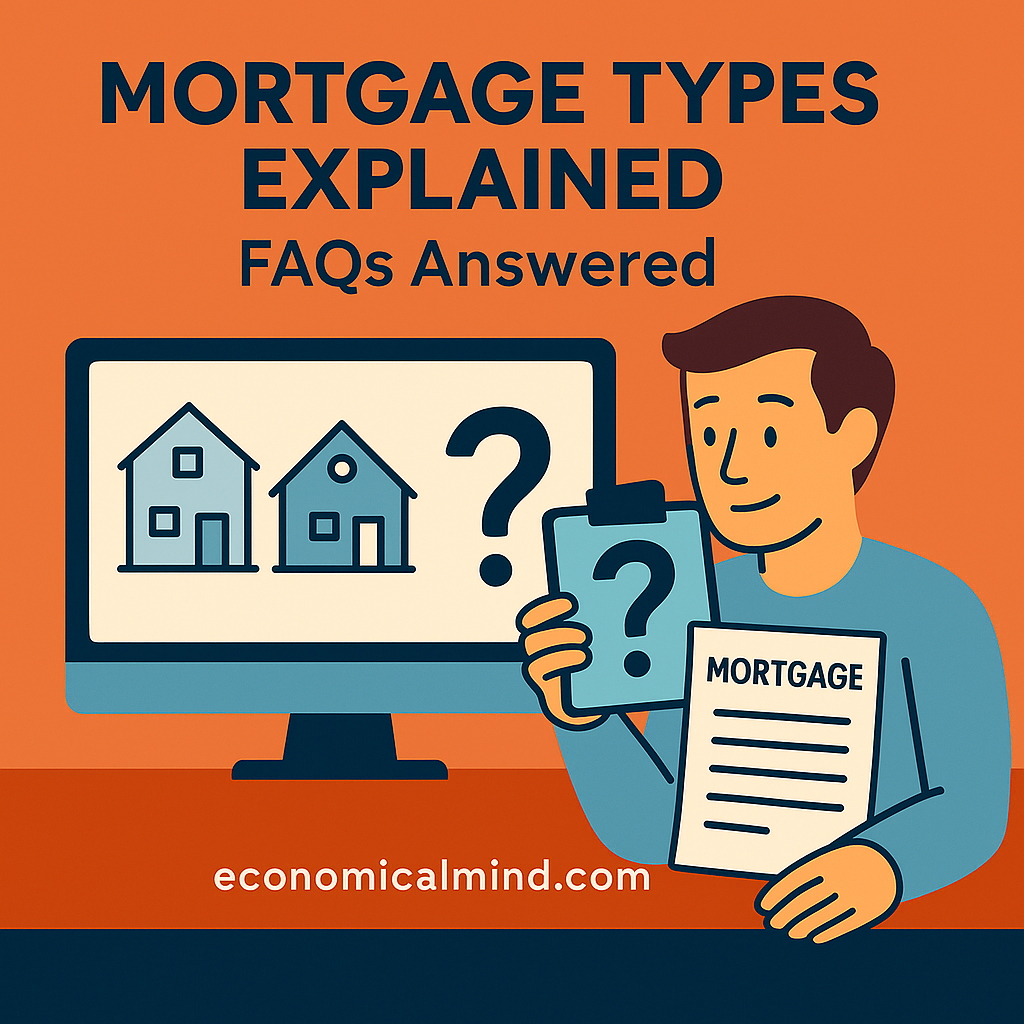
Buying a home is one of the biggest financial decisions you’ll ever make — and understanding mortgage types is essential for getting it right. From fixed-rate loans to adjustable-rate mortgages, each option has unique pros and cons that can impact your budget and long-term financial goals.
This FAQ guide breaks down the most common mortgage types, how they work, and what to consider before signing on the dotted line.
What Are the Main Types of Mortgages?
There are several main mortgage types, each suited for different financial needs and stages of life:
- Fixed-Rate Mortgage (FRM): Keeps the same interest rate for the life of the loan, providing predictable monthly payments.
- Adjustable-Rate Mortgage (ARM): Starts with a lower rate that adjusts periodically based on market trends.
- FHA Loan: Backed by the Federal Housing Administration; ideal for first-time buyers with lower credit or smaller down payments.
- VA Loan: Available to veterans and active-duty service members, often requiring no down payment.
- USDA Loan: Designed for rural and suburban homebuyers with moderate income.
- Jumbo Loan: For homes exceeding standard loan limits, typically requiring excellent credit and larger down payments.
Which Mortgage Type Is Best for First-Time Buyers?
For most first-time buyers, FHA loans and fixed-rate mortgages are the most accessible. FHA loans allow smaller down payments (as low as 3.5%) and more flexible credit requirements, while fixed-rate mortgages offer long-term stability.
If you’re eligible, VA loans are also a strong choice — they often have zero down payment and no private mortgage insurance (PMI).
What’s the Difference Between Fixed and Adjustable-Rate Mortgages?
| Feature | Fixed-Rate Mortgage | Adjustable-Rate Mortgage (ARM) |
|---|---|---|
| Interest rate | Stays the same | Changes after initial period |
| Payment predictability | High | Varies with market rates |
| Ideal for | Long-term homeowners | Short-term buyers or refinancers |
| Risk level | Low | Moderate to high |
Fixed-rate loans are best for homeowners who plan to stay long-term, while ARMs may suit those who plan to sell or refinance within a few years.
What Is a Conventional Loan vs a Government-Backed Loan?
A conventional loan is not insured by the federal government and typically requires stronger credit and a higher down payment.
A government-backed loan — such as FHA, VA, or USDA — has built-in protections for lenders, allowing more flexible terms for borrowers.
- Conventional: Best for borrowers with good credit and stable income.
- Government-Backed: Best for first-time buyers or those with limited savings.
What Are Jumbo Loans and When Are They Needed?
A jumbo loan is used when the amount borrowed exceeds the conforming loan limit set by the Federal Housing Finance Agency (FHFA), which is $766,550 in most areas (as of 2025).
These loans are ideal for higher-value homes but come with stricter lending standards, including:
- Strong credit history (usually 700+)
- Debt-to-income ratio below 43%
- Larger down payments (10–20%)
How Do You Choose the Right Mortgage Type?
Choosing the right mortgage depends on your financial situation and goals. Ask yourself:
- How long do I plan to stay in the home?
- Do I value stability or lower initial payments?
- How much can I afford to put down?
- Is my income stable or variable?
Pro tip: Use online mortgage comparison tools and calculators to model payments under different interest rate scenarios before committing.
Can You Refinance to a Different Mortgage Type Later?
Yes — refinancing lets you switch from one mortgage type to another if rates change or your financial situation improves. Common reasons to refinance include:
- Switching from ARM to fixed-rate for stability
- Lowering monthly payments with better rates
- Accessing home equity through a cash-out refinance
Be sure to factor in closing costs, which can range from 2% to 5% of your loan balance.
Key Takeaway
Understanding mortgage types is about more than just choosing a loan — it’s about choosing a financial path that fits your life.
A fixed-rate mortgage may offer peace of mind, while an adjustable-rate loan could help you save early on. The key is aligning your mortgage with your long-term plans and financial comfort level.
Smart buyers research, compare, and plan ahead — that’s how homeownership becomes a solid investment, not a stressful gamble.
